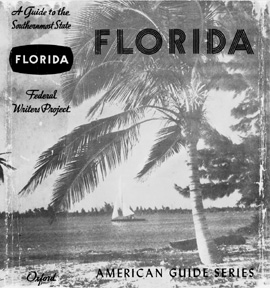May
5
2010
When Zora Neale Hurston died, both of her publishers provided money for a gravestone that never materialized.
provided money for a gravestone that never materialized.
The Hurston Trust has intimated that Zora didn’t want a headstone but Zora always loved being acknowledged with all the glory one could heap on her. And in that fashion, the city of Ft. Pierce has commissioned an artist to create a new memorial for her at the grave site. There are panels on it, one depicting roses, stating those were her “favorite flowers”. I’d never heard that. She was always mailing hatboxes full of citrus blooms to her patron Charlotte Mason, which surely sent both the NY and FL post offices into a tizzy of delirium. What a glorious smell that is!
Sadly this new memorial does not appear to correct the erroneous dates of Zora’s lifespan, as attributed incorrectly but nobly by Alice Walker in the 70s on a gravestone placed on Zora’s previously unmarked grave, acknowledging a much under-appreciated life (don’t blame Alice if Zora lied about her age). Perhaps I’ll bring my magic marker with me on my next trip to Ft. Pierce for some well-placed graffiti.
no comments | posted in Interesting Posts, Zora Neale Hurston
Apr
22
2010
Frederick Douglas Opie writes gloriously in his Hog and Hominy blog and treats us to wonderful recipes and edible eye candy. Fred is a scholar studying, among other things, African-American cookery in Their Eyes Were Watching God. I never knew there was so much to say about molasses. And now Fred is making me hooongry (that’s what one woman in Zora’s Eatonville Anthology would growl to get freebies from the local butcher).
Hog and Hominy blog and treats us to wonderful recipes and edible eye candy. Fred is a scholar studying, among other things, African-American cookery in Their Eyes Were Watching God. I never knew there was so much to say about molasses. And now Fred is making me hooongry (that’s what one woman in Zora’s Eatonville Anthology would growl to get freebies from the local butcher).
no comments | posted in Interesting Posts, Zora Neale Hurston
Apr
17
2010
There’s another tourist-discovers-Zora  article, this one in the Washington Post. The reporter focuses on Zora’s work for the WPA Florida Guide and visits Eatonville, the first incorporated all-black town in the country, and one of the places mentioned in the Guide. The Guide does not have any writer attributions but Zora assuredly wrote the article about her hometown (her personally typed articles are archived at the University of South Florida in Tampa). The reporter also visits the town of Cassadaga, a tiny place where future-seers hang signs on their mailboxes advertising their prophetic services, mostly based on palm-readings (available at a price). In a quandry as to whether Zora was the WPA worker who wrote the article about Cassadaga, the reporter needs to transplant herself into the past. If Zora had showed up in Cassadaga in 1938 snooping around, knocking at the doors of the town mediums, her future would have been a swift kick out of town. Segregation was still the law and blacks were not welcome. Zora’s work for the WPA Guide was relegated to “black” topics, which included conjure men and root doctors but not white spiritualists and mediums. But today, things are different in Cassadaga, where the spirit of brotherly love embraces money no matter the race of its owner.
article, this one in the Washington Post. The reporter focuses on Zora’s work for the WPA Florida Guide and visits Eatonville, the first incorporated all-black town in the country, and one of the places mentioned in the Guide. The Guide does not have any writer attributions but Zora assuredly wrote the article about her hometown (her personally typed articles are archived at the University of South Florida in Tampa). The reporter also visits the town of Cassadaga, a tiny place where future-seers hang signs on their mailboxes advertising their prophetic services, mostly based on palm-readings (available at a price). In a quandry as to whether Zora was the WPA worker who wrote the article about Cassadaga, the reporter needs to transplant herself into the past. If Zora had showed up in Cassadaga in 1938 snooping around, knocking at the doors of the town mediums, her future would have been a swift kick out of town. Segregation was still the law and blacks were not welcome. Zora’s work for the WPA Guide was relegated to “black” topics, which included conjure men and root doctors but not white spiritualists and mediums. But today, things are different in Cassadaga, where the spirit of brotherly love embraces money no matter the race of its owner.
no comments | posted in Interesting Posts, Zora Neale Hurston
Apr
2
2010
It’s that time of the year when thoughts turn to escape! Getting out of the cold. Getting away from the reality of harsher places. Time to head south from north, or across the country to palm trees and beaches.
A how-to article on following Zora’s Florida roust-abouts just found some space in the New York Times.
And if that doesn’t satisfy your wanderlust, buy a copy of my film Jump at the Sun for the real story.
no comments | posted in Interesting Posts, Zora Neale Hurston
 provided money for a gravestone that never materialized.
provided money for a gravestone that never materialized.

